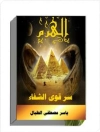Illuminates how the ceremonial dimension of death and the succession reflected both Scottish royal identity and a broader culture of ceremony.
To date, scholarly attention to royal ceremony in Scotland from the Middle Ages into the early modern period has been rather haphazard, with few attempts to explore how these crucial moments for the representation of royal authority. This monograph provides a long durée analysis of the ceremonial cycle of death and succession associated with Scottish kingship from the thirteenth to the sixteenth centuries, including the final century of the Canmore dynasty, the crisis of the Bruce-Balliol conflict, and the emergence and consolidation of the Stewart family up to the funeral of last monarch buried in Scotland, James V, in 1543. Using a broad range of primary sources, including financial records and material culture, many of them previously untapped, it addresses key questions about kingship and power, the function of ceremony in legitimising royal authority, its significance in relation to the practical exercising of power, and evidence for Scottish similarities and distinctiveness within wider European contexts.
Spis treści
List of Illustrations
Acknowledgements
List of Abbreviations
Note on Money
Introduction
1. The Last Canmore Kings
2. Contested and Compromised: Ceremonies and Succession under Balliol
and Bruce Kings
3. Stating Their Place: Ceremonial Legitimisation of the Stewart Dynasty,
1371-1436
4. Foreign Queens, the Home-Grown Elite and Minor Kings, 1437 to c.1474
5. The Pinnacle of Stewart Power? James IV and James V
Conclusion
Timeline of Key Events
Appendix I: Transcription of John Scrymgeour of Myres, NLS, Adv. MS 31.5.2
Appendix II: Attendees and Officiators at Scottish Inaugurations and Coronations
Appendix III: James IV and Margaret’s Wedding Costs, 1503
Appendix IV: Select Expenses from James V’s French Journey, 1536-37
Bibliography
Index
O autorze
Lucinda Dean is Senior Lecturer in History at the University of Highlands and Islands.












